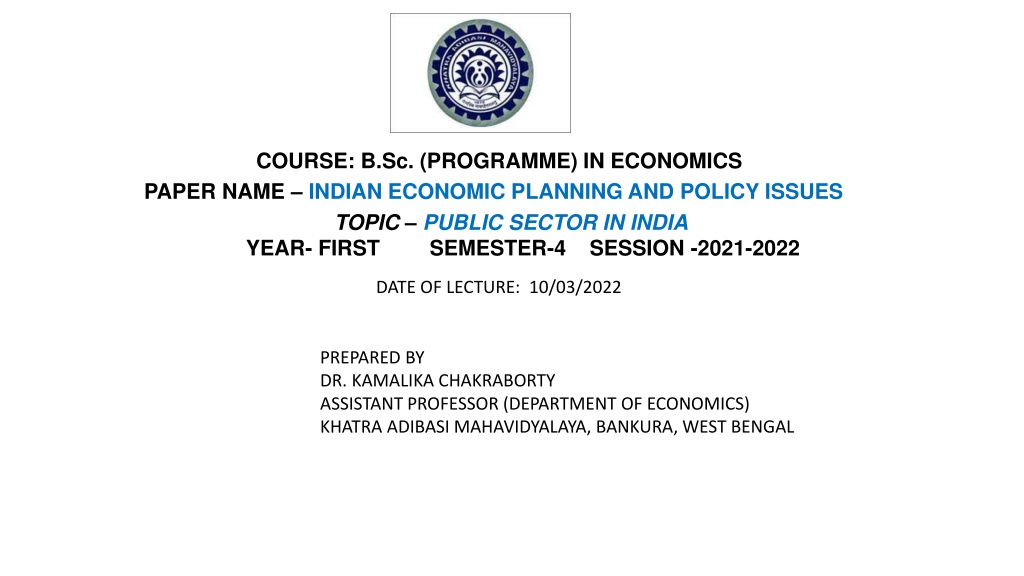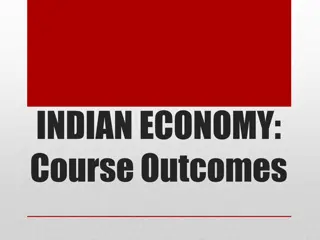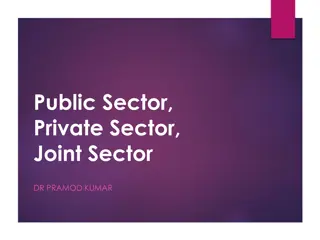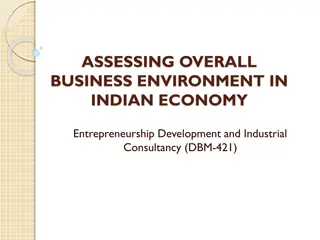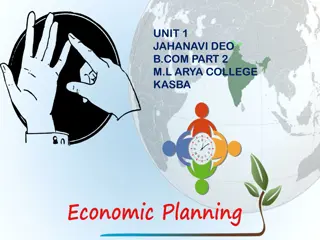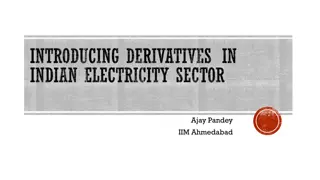Role of Public Sector in Indian Economy: Challenges and Solutions
The public sector in India plays a crucial role in economic development, but faces challenges like managerial, financial, and operational issues. To enhance effectiveness, it needs better planning, coordination, transparency, accountability, and adoption of new technologies. Addressing these challenges is essential for the public sector to contribute efficiently to the Indian economy.
Download Presentation

Please find below an Image/Link to download the presentation.
The content on the website is provided AS IS for your information and personal use only. It may not be sold, licensed, or shared on other websites without obtaining consent from the author. Download presentation by click this link. If you encounter any issues during the download, it is possible that the publisher has removed the file from their server.
E N D
Presentation Transcript
COURSE: B.Sc. (PROGRAMME) IN ECONOMICS PAPER NAME INDIAN ECONOMIC PLANNING AND POLICY ISSUES TOPIC PUBLIC SECTOR IN INDIA YEAR- FIRST SEMESTER-4 SESSION -2021-2022 DATE OF LECTURE: 10/03/2022 PREPARED BY DR. KAMALIKA CHAKRABORTY ASSISTANT PROFESSOR (DEPARTMENT OF ECONOMICS) KHATRA ADIBASI MAHAVIDYALAYA, BANKURA, WEST BENGAL
PUBLIC SECTOR IN INDIA The public sector in India has been playing a very significant role since the country s independence. Importance of the Public Sector in the Economy It plays a key role in the economic development of a country It helps in providing essential services to the citizens It provides employment opportunities It helps in the development of infrastructure It encourages private investment It promotes exports The public sector is the backbone of the Indian economy and it plays a pivotal role in its development.
Objectives of Indian Public Sector: The objectives of the public sector in India can be divided into three categories: Social Objectives: The public sector aims at providing basic goods and services to the citizens. It also provides employment opportunities and promotes economic development. Economic Objectives: The public sector plays a key role in the development of infrastructure and encourages private investment. Political Objectives: The public sector protects the interests of weaker sections of society and promotes exports.
Major Problems Faced by Indian Public Sector: There are several problems faced by Indian public sector enterprises that can be classified into three categories: managerial problems, financial problems, and operational problems. Managerial Problems: The public sector is plagued by red-tapism, bureaucracy, and corruption. These problems have led to inefficiency and poor quality of products and services. Financial Problems: Public sector enterprises are often dependent on the government for their financial needs. This dependence has led to a lack of autonomy and accountability. Operational Problems: Public sector enterprises are often hampered by outdated technology and processes. This has led to low productivity and high costs.
Role of Public Sector in Economic Growth of India: The public sector has always been an important part of the Indian economy. However, its performance over the years has not been up to the mark. The steps which need to be taken by the Public Sector to be Effective and Efficient are: The public sector needs to be more efficient and effective. There is a need for better planning and coordination between the various agencies of the government. The public sector needs to focus on its core competencies and outsource non-core activities. There is a need for more transparency and accountability in the functioning of the public sector. The public sector needs to adopt new technologies and processes to improve its efficiency. The public sector needs to be more customer-oriented in its approach. The public sector needs to reduce its dependence on the government for financial assistance. The public sector needs to focus on its strengths and improve upon its weaknesses.
